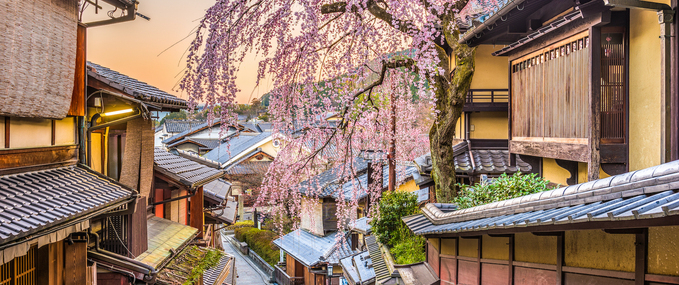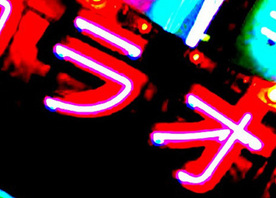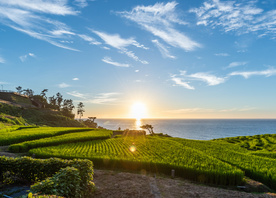Take a walk through the lantern lit alleyways of feudal era Japan with a visit to Higashiyama - one of Kyoto’s best preserved historic districts.
Table of contents
Intro
Kyoto is known as the cultural heart of Japan and Higashiyama is one of its most iconic and historic districts. Famous for its beautiful, traditional wooden buildings and merchant shops, picturesque streets and alleyways, a walk through Higashiyama is like stepping back in time. In many ways, it is the Japan of your imagination. It’s also home to some of Kyoto’s most iconic landmarks and attractions. In our guide, we’ll take a closer look at Higashiyama, explaining everything you need to know ahead of a visit to this beautiful area, including the best things to see and do, famous landmarks, nearby attractions, how to get there with your JR Pass, and more. It’s time for a journey back to old Japan.
A Brief History of Higashiyama
While it contains some of Kyoto’s most historic and well-preserved 15th Century buildings, alleyways, and landmarks, modern-day Higashiyama was only formally named in 1929 when it split from Shimogyō-ku. Until 1976, it also covered present-day Yamashina-ku, which was an independent town before merging with the city of Kyoto. Today, Higashiyama ranks alongside Gion - Kyoto’s famous geisha district - as one of Japan’s best preserved historic areas. Many international visitors conflate the two districts, since they are so close together. The name Higashiyama actually means ‘Eastern Mountain District’ and directly refers to the lower slopes of Kyoto’s eastern mountains. However, colloquially it has come to encompass a wider area and to embody Higashiyama Culture. What is Higashiyama Culture? Essentially, it is dedicated to the preservation of traditional 15th Century Japanese culture, including Zen Buddhism and Wabi-Sabi - the acceptance of transience and imperfection in life - tea ceremonies, ikebana flower arranging, Noh drama, ink painting, and traditional architecture including Zen gardens and tatami mats. Higashiyama Culture is closely associated with Shogun Ashikaga Yoshimasa, who retired to Kyoto’s eastern mountains in the 15th Century, which gave the movement its name. His home, The Silver Pavilion, was constructed in 1482 and still stands. We’ll have more on this below.
Over the last few decades, Higashiyama district has become particularly famous for the beautiful streets between Kiyomizu-dera temple and Yasaka Shrine, and many of its attractions are now UNESCO World Heritage recognised. It’s also well-known for its traditional shops and restaurants which open at around 9 or 10am each day and close at around 5 or 6pm at night. The one exception is the Hanatoro festival in March (more on this below), when the shops open late and the streets are lit up with beautiful paper lanterns. If you’ve ever been fascinated by the simple beauty of traditional Japanese culture from the feudal period then Higashiyama will provide you with an unforgettable journey back in time.

Best Things To Do in Higashiyama
Although Higashiyama isn’t a huge geographical area, there is a considerable amount to see and do. Exploring the area on foot could easily take a day, and there are many major landmarks and attractions where you may want to spend several hours. In some ways, it’s not a case of what to do in Higashiyama, but how to fit everything in. Let’s take a look at our recommendations for the best things to see and do in Higashiyama district.
Kiyomizu-Dera
Kiyomizu-Dera is known for being one of the most beautiful and historic sites. The ‘pure water temple’ is especially renowned for its famous and iconic wooden stage which offers breath-taking views over the cultural heart of Japan. This ancient Buddhist temple takes its name from the water flowing through the temple complex from Otowa Waterfall. Kiyomizu-dera literally means ‘clear or pure water’ and was founded in 778 during the early Heian period. Kiyomizu-Dera features more than 30 buildings and structures, but is most famous for its main hall and wooden stage, made from centuries old trees. For everything you need to know about this famous temple in Higashiyama district, read our comprehensive Guide to Visiting Kiyomizu-Dera. Once you’ve explored the temple and its grounds, head out into nearby streets such as Sannenzaka, which is known for its free food samples. Also, look out for local specialities such as Kiyomizu-dera sweets, pickles, black sesame ice cream, and pottery known as ‘Kiyomizu-yaki’. There are also lots of great traditional shops and restaurants in the area.
Higashiyama Hanatoro
While there are night illuminations year round at Kiyomizu-Dera, the biggest takes place in March to coincide with Higashiyama Hanatoro - a 10-day special event in which the whole area, and all of its shops, open up after dark. As well as the special illuminations for this event, there are also thousands of beautiful lanterns lighting up the streets, maiko dances, fox processions and flower decorations. Kyoto loves traditional festivals (just like the rest of Japan). You can find out more about Japanese ‘matsuri’, and how to visit each one with the JRailPass, in our guide to the Top 12 Festivals in Japan.
Kodaiji Temple
A picturesque temple built in 1605 to commemorate Toyotomi Hideyoshi, the wife of a famous politician. With beautiful landscaped gardens, a bamboo grove, and teahouse, these temple grounds are as pretty as they are serene.
Kyoto National Museum
One of Japan’s main art museums, Kyoto National Museum was opened in 1987 and can be found in Higashiyama. It is one of only four national museums in Japan and houses a prestigious permanent collection as well as special exhibitions displayed in an original building from the Meiji Period. Kyoto National Museum is a must-see for art lovers visiting Higashiyama.
The Philosopher’s Path
The famous and beautifully picturesque canal path takes its name from being the walking route of Nishida Kitarō, one of the most significant and influential Japanese philosophers. Starting at Nanzenji Temple, the path follows a small canal line with hundreds of cherry blossom trees, and passes a number of temples and shrines including Eikan do Zenrin-ji, Otoya Shrine and Honen-in, before ending around Ginkakuji, the Silver Pavilion. The path is picturesque from beginning to end and especially so during the Sakura season. For more on this famous path read our guide to Walking The Philosopher’s Path while for more tips on visiting during Japan’s world-famous cherry blossom season check out our article on Everything You Need To Know When Travelling for Hanami (Flower Gazing).
Maruyama Park
Higashiyama’s Maruyama Park is another hugely popular spot for cherry blossom viewing each spring. This picturesque public park is packed with gorgeous cherry blossom trees, and is the perfect place for hanami - the art of flower gazing with friends and family. Maruyama Park is free to enter and always open.
The Silver Pavilion
The Silver Pavilion (Ginkajuji) is an elegant Zen temple found in the east of Kyoto that is home to some impressive temple buildings and pretty gardens. As we mentioned above, it was originally constructed in 1482 as a retirement villa for the aforementioned Shogun Ashikaga Yoshimasa. Named Ginkakuji, it was modelled after the Golden Pavilion, which was built for the Shogun's grandfather. The two-storey pavilion is officially known as the Kannon Hall and is dedicated to Kannon, the Buddhist goddess of mercy. It has several other temples on the grounds and two beautiful gardens, including the famous ‘Sea of Silver Sand’ garden. The two most common ways to get to the Silver Pavilion are by bus or on foot. The 5, 17 or 100 buses all run from Kyoto Station to the temple, taking around 40 minutes to get there. Another approach though is to take the Kyoto Metro to the Nanzenji Temple and then walk the popular Philosopher Path over to the Silver Pavilion Read our Guide to The Silver Pavilion for much more on this temple.
Shogunzuka Mound
Located on Mount Higashiyama, Shogunzuka Mound is reportedly the spot where legendary Emperor Kammu decided to form a new capital city, Kyoto, in the 8th Century. As well as this historic story, the mound offers beautiful hilltop views over Kyoto, and is also home to Shogunzuka Seiryu-den Temple.
How to get to Higashiyama
Getting to Kyoto with your JRailPass is easy from either Tokyo or Osaka. Both cities are connected to Kyoto by the JR Tokaido Shinkansen. From Osaka you can also take the JR special rapid train on the JR Kyoto Line. Once in Kyoto, the easiest way to get around the city is using public transportation, so you’ll want to invest in a prepaid travel card such as an ICOCA, PASMO or Suica card, as well as a JRailPass for getting around the rest of the country. Check out our Top 30 Tips for Using Japan’s Metros for advice and guidance on using the city’s subway network. You will find Higashiyama on the Kyoto Subway Tozai line. You can also reach Higashiyama district by taking one of the regular buses from Kyoto Station or by walking from Kiyomizu Gojo Station or Gion-Shijo Station. 
What’s Near Higashiyama?
Higashiyama has the advantage of being close to many of Kyoto’s most famous districts, landmarks and attractions. Even after you’ve seen everything in Higashiyama itself, you’ll have lots left to do nearby. We’ve put together a few highlights below:
Gion district
Kyoto’s famous Geisha district and arguably the best known area of its kind in Japan, Gion is not just home to Geiko (Geisha) and Maiko (Geisha in training), but traditional shops, tea houses, cafes, and restaurants. It is arguably Kyoto’s most photographed area and remains hugely popular among international visitors who want to experience ‘Old Japan’.
Yasaka Shrine
Located in Gion and close to the historic Higashiyama district, Yasaka Shrine is an easy visit to include when exploring the Eastern side of Kyoto. Founded in 656, Yasaka-Jinja is commonly known as the Gion Shrine for organizing the Gion festival every year. It starts on July 17 and lasts for a full week. Many ceremonies are held during the festival but the most famous feature is the parade. To find out what it’s like, read our guide to Experiencing the Gion Matsuri Festival in Kyoto. Also look out for the iconic five-storey Yasaka Pagoda, reconstructed in 1440 and open to visitors.
Pontocho
Established in 1670 and similar to Higashiyama for its traditional and authentic atmosphere, Pontocho is a small district consisting of a series of small alleyways located near the city centre of Kyoto, between Shijo-dori and Sanjo-dori, and close to the Kamogawa river. Like Higashiyama and Gion district, Pontocho is built of wooden traditional structures, like teahouses and, like Gion, is an established place for Geisha and Maiko. Although no theatres remain in the district, it is said to be the historic birthplace of Kabuki - traditional Japanese drama. The area also has a unique cuisine enjoyed in the open air along the Kamogawa river. This style of dining is known as kawayuka, and Pontocho is packed with restaurants. Find out much more about this area by reading our Guide to Pontocho.
Heian Shrine
Built in 1895, Heian Shrine has a giant red torii gate as its entrance and features buildings based on the original Imperial palace from the Heian period, albeit on a smaller scale. The shrine is also the location of the Jidai Festival which takes place every October. Heian Shrine is a ten-minute walk from Higashiyama subway station.
Bonus Tips for Kyoto
Even after you’ve experienced the historic sights and sounds of Higashiyama, there is a huge amount to do in the rest of Kyoto. Why not travel to the southwest of the city next to see the famous Vermillion red torii gates of Fushimi Inari Shrine - one of Japan’s most iconic sights?
- Kyoto is world-famous for its temples and shrines. It has so many you might not know where to start, which is why we’ve put together our list of the Best Buddhist Temples in Kyoto to help you plan your visit.
- One of the names on this list is the famous Toji Temple, which boasts the tallest pagoda in Japan. Discover Why You Can’t Miss The Toji Temple in Kyoto.
- Meanwhile, for a more contemporary landmark, how about the Kyoto Tower for breath-taking views?
- Alongside your Japan Rail Pass for visiting Kyoto by train, remember to invest in a prepaid travel card for travelling around the city itself.
- First time in Japan? Consider our Meet and Greet Service - it’s like having a personal assistant and local travel expert ready to meet you on arrival.
Stay connected with Pocket Wifi - it’s the best way to access the internet from multiple devices while travelling in Japan and helps avoid unexpected data charges.





